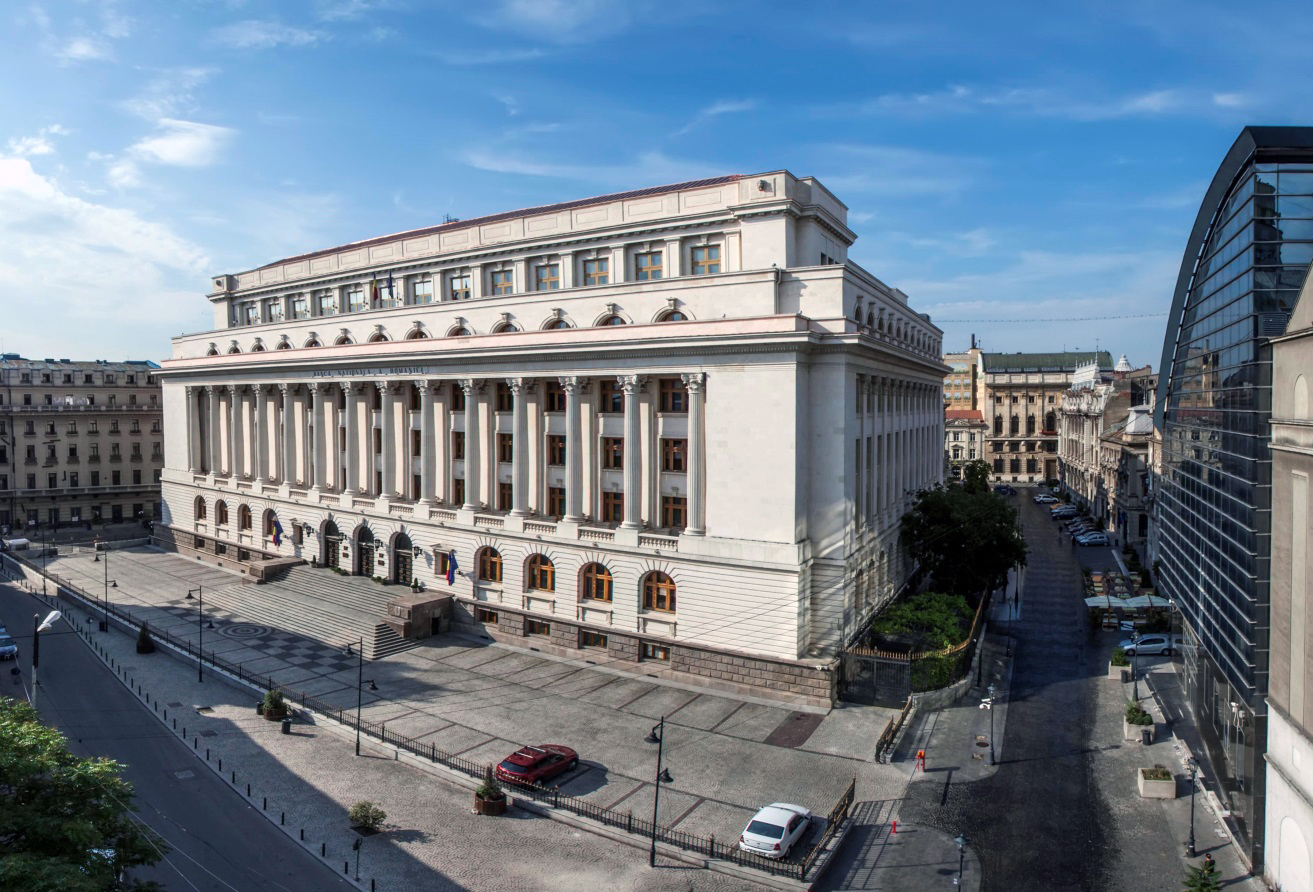Ever since 1933 there were discussions about extending the bank’s office areas, much needed for its good functioning and due to the expansion of the bank’s prerogatives, such as the organization and supervision of currency exchanges, precious metals circulation, as well as the enlargement and modernization of the existing bank vault with increased security procedures.
The architectural blueprint of the new palace was realized by the bank’s Architecture Department, by a group under the leadership of Radu Dudescu, intending to create a layout that would meet the needs of the bank for “an unlimited period of time”. For the preparation of the project, but also for the subsequent set-up of the installations and interior finishes, Dudescu would travel to Geneva, Paris and Berlin.
Radu Dudescu reinterpreted the main façade of the Old Palace and developed it, by replicating columns of the same height and at the same distance from the axis. Successive conversions lead to a new architectural model, with a new and completely different façade, resulting in an impressive construction, classic in expression, and fitting the monumental trend of the thirties from an architectural point of view.
The building meets the new needs of banking activities, in terms of space and distribution of functions, flexibility of spaces for offices, new equipment for plumbing, external and internal finishes. After the major earthquake of 1940, the design of the palace’s structural frame was redone, to comply with the newest European protection norms against earthquakes.

The New Palace, the entrance on Doamnei Street
The construction of the palace began in 1940 and stretched for over 10 years, due to difficulties in obtaining construction materials and work force during the war.
Nevertheless, the exceptional quality of the execution and of the materials used is to be duly noted, as well as the care for detail in completing the construction. All these are also a result of the attention and exigency of the governors that had run the bank over that period.
The sobriety of the building and its classic aspect are highlighted by the façades in Vrața stone. The ample stairs and base at the main entrance in Doamnei Street are coated in Măcin granite.
The ground floor halls are public, representational, and their unique finishing material is Rușchița marble. The use of this marble highlights the qualities of the stone and less the interior ornaments, while the layout of the plates create a design that functions as the spaces’ decoration. Yet, the rotunda in the central hall, decorated with geometrical elements, stands out, whereas the ceiling of the same space is painted. The Mitiță Constantinescu and Alexandru Ottulescu halls (the governors in office during the works on the New Palace) are used for conferences and other activities specific to central banks. The rest of the building comprises the offices of the management and of the employees of the National Bank of Romania.